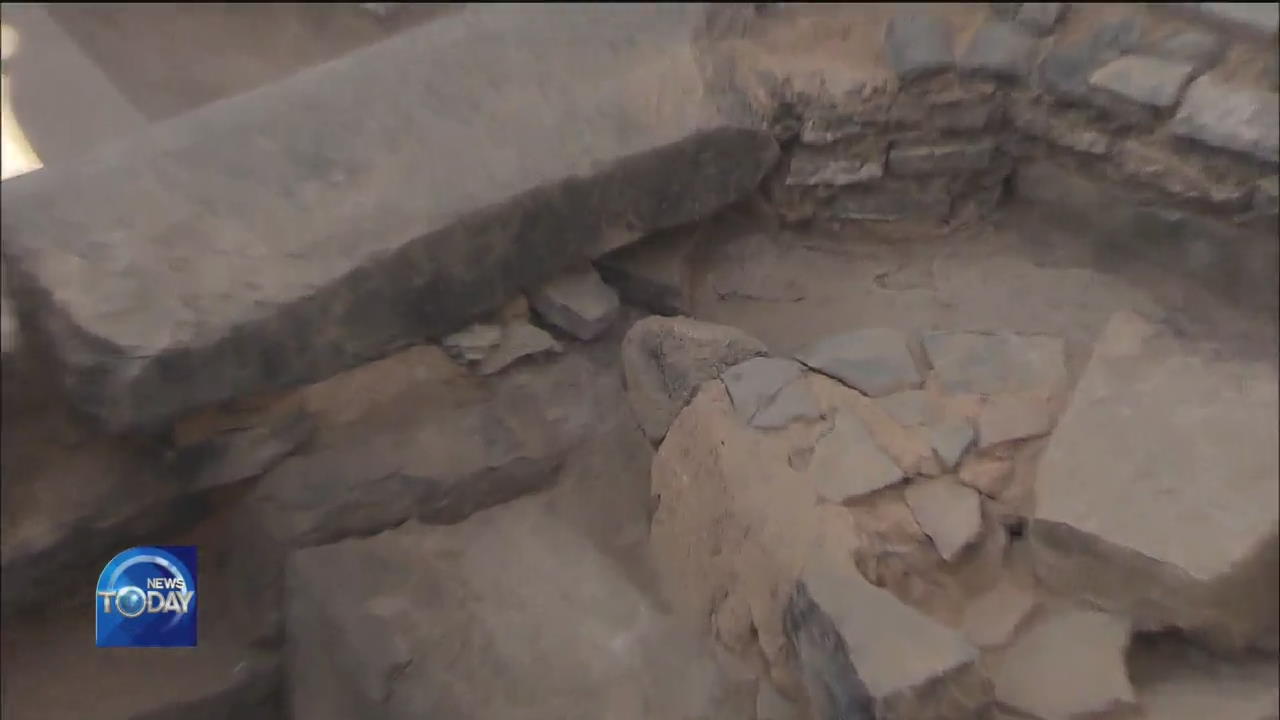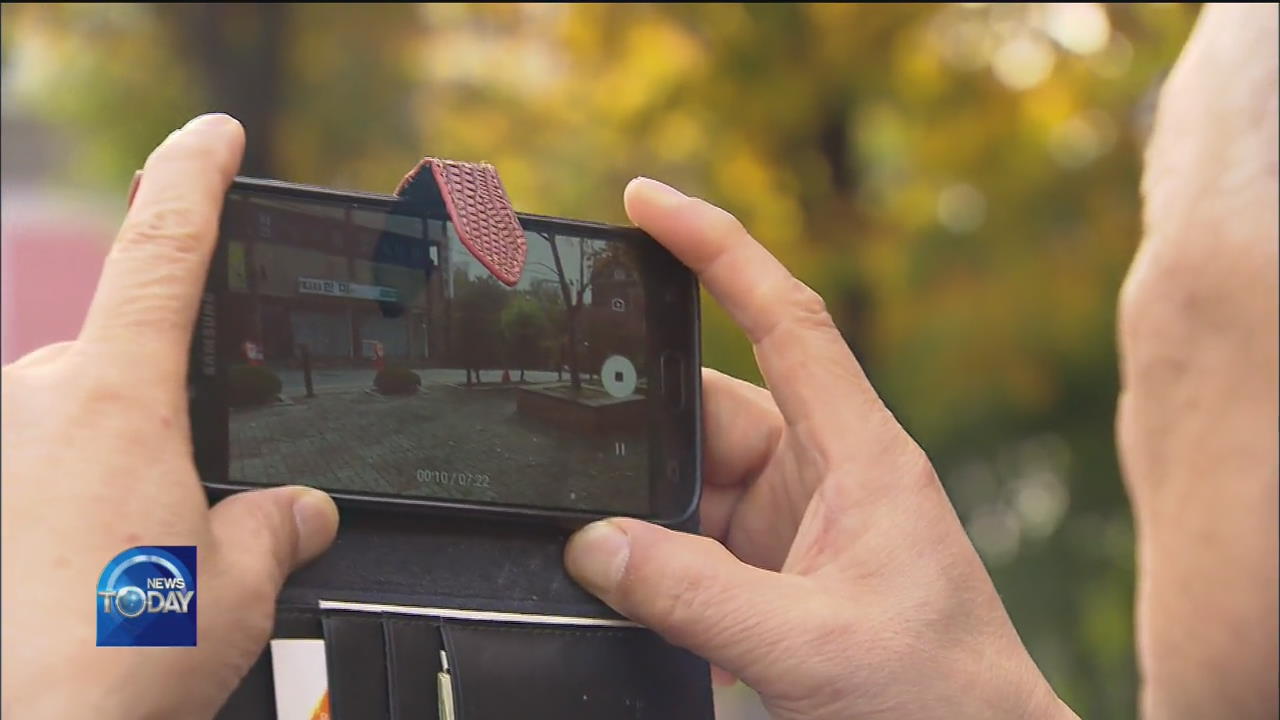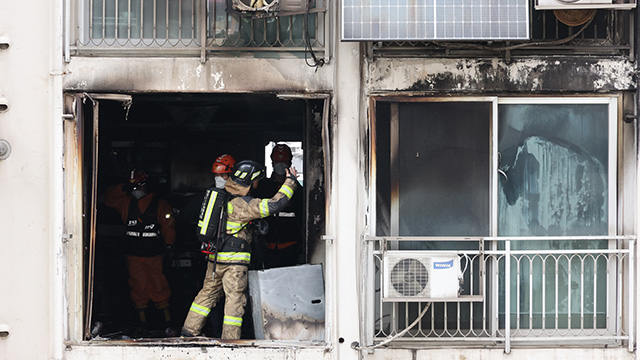HEATING SYSTEM IN TRADITIONAL PAVILION
입력 2019.11.21 (15:12)
수정 2019.11.21 (16:45)
읽어주기 기능은 크롬기반의
브라우저에서만 사용하실 수 있습니다.
[Anchor Lead]
There is a two-story pavilion named Hyangwonjeong in the rear garden of Gyeongbokgung Palace. An unusual hexagon-shaped structure was found, but was even more surprising is that it even had a rare feature, a special kind of ondol heating system. Let's take a look.
[Pkg]
In the rear garden of Gyeongbokgung Palace, one can find arguably the most beautiful pond in Korea. At the heart of it stands a two-story pavilion named Hyangwonjeong. This unusual hexagon-shaped structure is estimated to have been built in the late 1860s during the reign of King Gojong. The pavilion was leaning to one side, so it was being disassembled and restored. But during the process, the staff discovered there's an ondol heating system under it. Unlike the conventional ondol structure, this one circulates heat along the outer edge of the floor. It's an unusual layout seen for the first time in a pavilion.
[Soundbite] NAM HO-HYEON(RESIDENT SCHOLAR, NAT'L RESEARCH INSTITUTE OF CULTURAL HERITAGE) : "There weren't sufficient records that show how Hyangwonjeong was built. But we were able to learn more during the disassembly."
A few monochrome photos since the 1890s were the only records of Hyangwonjeong that survived to this day. There is also a document proving King Gojong and his queen watched a skating competition held at this pond. So it can be assumed that the ondol heating system in Hyangwonjeong was installed so that the royals can enjoy the surrounding scenery even in winter.
[Soundbite] BAE BYOUNG-SUN(DIR., GANGHWA NAT'L RESEARCH INSTITUTE OF CULTURAL HERITAGE) : "It's possible the heat circulated along the edge is transferred to the center to keep the pavilion warm."
Hyangwonjeong Pavilion, modified during the Japanese colonial period, will be unveiled to the public next July, after being restored to its original form.
There is a two-story pavilion named Hyangwonjeong in the rear garden of Gyeongbokgung Palace. An unusual hexagon-shaped structure was found, but was even more surprising is that it even had a rare feature, a special kind of ondol heating system. Let's take a look.
[Pkg]
In the rear garden of Gyeongbokgung Palace, one can find arguably the most beautiful pond in Korea. At the heart of it stands a two-story pavilion named Hyangwonjeong. This unusual hexagon-shaped structure is estimated to have been built in the late 1860s during the reign of King Gojong. The pavilion was leaning to one side, so it was being disassembled and restored. But during the process, the staff discovered there's an ondol heating system under it. Unlike the conventional ondol structure, this one circulates heat along the outer edge of the floor. It's an unusual layout seen for the first time in a pavilion.
[Soundbite] NAM HO-HYEON(RESIDENT SCHOLAR, NAT'L RESEARCH INSTITUTE OF CULTURAL HERITAGE) : "There weren't sufficient records that show how Hyangwonjeong was built. But we were able to learn more during the disassembly."
A few monochrome photos since the 1890s were the only records of Hyangwonjeong that survived to this day. There is also a document proving King Gojong and his queen watched a skating competition held at this pond. So it can be assumed that the ondol heating system in Hyangwonjeong was installed so that the royals can enjoy the surrounding scenery even in winter.
[Soundbite] BAE BYOUNG-SUN(DIR., GANGHWA NAT'L RESEARCH INSTITUTE OF CULTURAL HERITAGE) : "It's possible the heat circulated along the edge is transferred to the center to keep the pavilion warm."
Hyangwonjeong Pavilion, modified during the Japanese colonial period, will be unveiled to the public next July, after being restored to its original form.
■ 제보하기
▷ 카카오톡 : 'KBS제보' 검색, 채널 추가
▷ 전화 : 02-781-1234, 4444
▷ 이메일 : kbs1234@kbs.co.kr
▷ 유튜브, 네이버, 카카오에서도 KBS뉴스를 구독해주세요!
- HEATING SYSTEM IN TRADITIONAL PAVILION
-
- 입력 2019-11-21 15:11:43
- 수정2019-11-21 16:45:55

[Anchor Lead]
There is a two-story pavilion named Hyangwonjeong in the rear garden of Gyeongbokgung Palace. An unusual hexagon-shaped structure was found, but was even more surprising is that it even had a rare feature, a special kind of ondol heating system. Let's take a look.
[Pkg]
In the rear garden of Gyeongbokgung Palace, one can find arguably the most beautiful pond in Korea. At the heart of it stands a two-story pavilion named Hyangwonjeong. This unusual hexagon-shaped structure is estimated to have been built in the late 1860s during the reign of King Gojong. The pavilion was leaning to one side, so it was being disassembled and restored. But during the process, the staff discovered there's an ondol heating system under it. Unlike the conventional ondol structure, this one circulates heat along the outer edge of the floor. It's an unusual layout seen for the first time in a pavilion.
[Soundbite] NAM HO-HYEON(RESIDENT SCHOLAR, NAT'L RESEARCH INSTITUTE OF CULTURAL HERITAGE) : "There weren't sufficient records that show how Hyangwonjeong was built. But we were able to learn more during the disassembly."
A few monochrome photos since the 1890s were the only records of Hyangwonjeong that survived to this day. There is also a document proving King Gojong and his queen watched a skating competition held at this pond. So it can be assumed that the ondol heating system in Hyangwonjeong was installed so that the royals can enjoy the surrounding scenery even in winter.
[Soundbite] BAE BYOUNG-SUN(DIR., GANGHWA NAT'L RESEARCH INSTITUTE OF CULTURAL HERITAGE) : "It's possible the heat circulated along the edge is transferred to the center to keep the pavilion warm."
Hyangwonjeong Pavilion, modified during the Japanese colonial period, will be unveiled to the public next July, after being restored to its original form.
There is a two-story pavilion named Hyangwonjeong in the rear garden of Gyeongbokgung Palace. An unusual hexagon-shaped structure was found, but was even more surprising is that it even had a rare feature, a special kind of ondol heating system. Let's take a look.
[Pkg]
In the rear garden of Gyeongbokgung Palace, one can find arguably the most beautiful pond in Korea. At the heart of it stands a two-story pavilion named Hyangwonjeong. This unusual hexagon-shaped structure is estimated to have been built in the late 1860s during the reign of King Gojong. The pavilion was leaning to one side, so it was being disassembled and restored. But during the process, the staff discovered there's an ondol heating system under it. Unlike the conventional ondol structure, this one circulates heat along the outer edge of the floor. It's an unusual layout seen for the first time in a pavilion.
[Soundbite] NAM HO-HYEON(RESIDENT SCHOLAR, NAT'L RESEARCH INSTITUTE OF CULTURAL HERITAGE) : "There weren't sufficient records that show how Hyangwonjeong was built. But we were able to learn more during the disassembly."
A few monochrome photos since the 1890s were the only records of Hyangwonjeong that survived to this day. There is also a document proving King Gojong and his queen watched a skating competition held at this pond. So it can be assumed that the ondol heating system in Hyangwonjeong was installed so that the royals can enjoy the surrounding scenery even in winter.
[Soundbite] BAE BYOUNG-SUN(DIR., GANGHWA NAT'L RESEARCH INSTITUTE OF CULTURAL HERITAGE) : "It's possible the heat circulated along the edge is transferred to the center to keep the pavilion warm."
Hyangwonjeong Pavilion, modified during the Japanese colonial period, will be unveiled to the public next July, after being restored to its original form.
이 기사가 좋으셨다면
-
좋아요
0
-
응원해요
0
-
후속 원해요
0

















이 기사에 대한 의견을 남겨주세요.